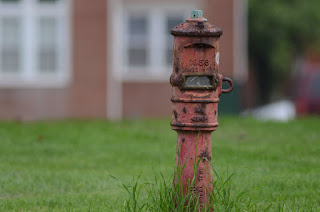However, I recently acquired a Nikkor 400mm f/5.6 AI-S and 85mm f/1.8 (AI'd). Manual focus isn't everyone's thing, but I have enjoyed it a fair amount, and these are focal lengths of some interest to me, and help to illustrate how the longer focal length tends to "compress" a scene.
Here's a picture from the 85:
 | |
| Fire hydrant? 85mm f/2.8, 1/5000s @ ISO 400 |
While they're not super obvious, there are clearly buildings in the background some distance away. A somewhat equivalent picture from the 400:
 |
| 400mm f/5.6, 1/1600s @ ISO 800 |
And just to make you jealous, a moon shot from the 400; it's cropped, run through unsharp, and has been color corrected some:
 |
| 400mm f/8, 1/1000s @ 800 ISO; hand-held |
The two images of the hydrant go a long way to explain the compression. Thanks for that. The moon shot makes me hate you just a touch more.
ReplyDelete